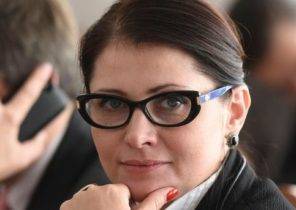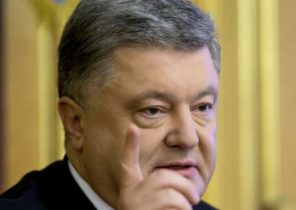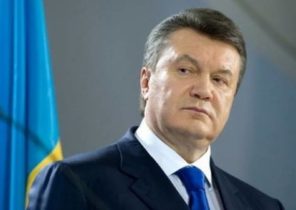Editorial:
June 12, the newest nuclear submarine of strategic appointment To-549 “Prince Vladimir” officially entered service of the Navy of Russia. “Prince Vladimir” is the first submarine of the fourth generation, built on the project 955A “Borey”. It is planned to build seven nuclear submarines of this project that will greatly enhance the strength of the nuclear forces of sea basing.
Recently the President of Russia Vladimir Putin approved the policy of nuclear deterrence to show the world what place nuclear weapons occupy in the armed forces of the country, under what circumstances it will be used and who owns the right to decide on its application. All this attracted increased attention from abroad. Edition The Paper published a series of articles “rubric”Nuclear Renaissance” Russia” under the heading “The Paper defense”. Articles will be dedicated to discussing such topics as the Russian policy of nuclear deterrence, modernization of the nuclear Arsenal and U.S.-Russian strategic arms control.
June 2, news Agency TASS reported that Russian President Vladimir Putin approved the foundations of state policy on nuclear deterrence. The document says that the country may use nuclear weapons in response to the application of enemy nuclear strike on the important objects of its infrastructure. However, the weak point has the Russian strategic missile forces: in particular, due to the expiration of the period of operation will soon be decommissioned famous heavy Intercontinental ballistic missile R-36M, which Western intelligence agencies gave the name “Satan.” Beyond doubt, Russia will not allow the collapse of its last support, currently being developed “successor” R-36M heavy Intercontinental ballistic missile RS-28 “Sarmat”.
A dangerous weakness of the Russian nuclear Arsenal
Russia has inherited the huge Soviet nuclear Arsenal, made the USSR a nuclear superpower on par with the US. The Russian nuclear Arsenal is distributed by three types of forces: land, sea and air. The most remarkable are the strategic missile forces, land-based, they remain the main force of nuclear deterrence since the Soviet era and to this day. After the collapse of the Soviet Union collapsed and the system of military-industrial developments that were severely affected by nuclear missiles. Russia has developed a rocket complex “Topol-M” to launch a solid-fuel Intercontinental ballistic missiles. It can be considered an advanced model of the Russian missile complex “Topol”. After some time in the country was developed by the missile system “YARS” with Intercontinental ballistic missiles with multiple warheads, which is different from “Topol-M” only separable warhead. Development, production and placing of complexes “Topol-M” and “YARS” has helped to fill the niche vacated after the cancellation of the complex with Intercontinental ballistic missile “Topol”, and to support Russian nuclear forces land-based, making possible the transition from the old to the new. However, the country also has a lot of liquid propellant missiles, in particular the famous heavy Intercontinental ballistic missile R-36M. They have excellent performance in the West they are called “Satan”, that proves their power.
Currently in service with Russia is 46 missiles R-36M “Satan”, with a total of 460 nuclear warheads, representing half of all nuclear warheads in the possession of the strategic missile forces. However, the development and production of R-36M was carried out in the Ukrainian design Bureau “southern”, and after the Ukrainian crisis of 2014, the question arose about the maintenance of the R-36M, once feared by the entire West. Besides, the life of the missiles produced during the cold war came to an end. If the replacement R-36M there was no suitable missiles, Russian strategic missile forces would have been in a very awkward position of having “bullets”, but not having “guns”; half the sky was ready to fall, would be disrupted nuclear balance between Russia and the United States, what the odds would have been on the side of the United States.
Despite the fact that the R-36M is a Ukrainian missile production, Russia is also able to create a liquid Intercontinental ballistic missiles, the engines for “Satan” produced in Russia. The development of heavy liquid Intercontinental ballistic missiles became the country’s most easy and effective way out of the crisis caused by the end of their useful life R-36M. In 2014, the Russian defense Ministry officially announced the creation of the heavy liquid ICBM “Sarmat”, SRC Makeyev received the order for carrying out of developmental works and started him at the time of the crisis. Development ended in 2020, and outdated R-36M was able to shift the demands placed on it responsibility for a new rocket, thus maintaining Russia’s status as a nuclear power.
Old tree liquid rockets bloomed again
China, USA and Russia has already developed and adopted a solid-fuel Intercontinental ballistic missiles. They feature small size, light weight, and easy maintenance, however, the propulsion of solid rocket motors low specific impulse, and the lighter weight says smaller throw-weight. In addition, rockets with such engines do not cope well with multi-charge warhead — this is the main reason why China and Russia still adhere to the liquid Intercontinental ballistic missiles. Half of the Russian strategic missile forces are equipped with missiles R-36M, Russia gives missile with liquid engine of great importance.
If after the expiration of the period of operation of the R-36M, she decides to move to solid-fuel Intercontinental ballistic missiles, in order to distribute between the existing warheads, it will have to produce hundreds of missiles. Such production capacity of the Votkinsk plant, besides that it is a serious blow to the defence budget of the country. Realizing this situation, Russia has long been engaged in the development of a new Intercontinental ballistic missile with liquid fuel. The Ministry of defence has planned the beginning of works on creation of a new missile, designed to replace R-36M, for the year 2009. As it was reported, the starting weight of the rocket will be not less than 100 tons, it can carry up to 10 nuclear warheads over a distance of about 10 thousand kilometers. This rocket was “Sarmat”. Technical characteristics of the Intercontinental ballistic missile is constantly changing: first it was said that the starting weight will exceed 100 tons, then he will be from 120 to 160 tons. In 2016, stated that “Sarmat” will be 20% lighter than the R-36M, and now this figure increased to 208 tons and almost approached the R-36M, the starting weight is 210 tons.
In 2018, Putin said that the missile “Sarmat” has passed starting tests, and in 2019 it will be put in the strategic missile forces to replace the old missiles. The forum “Army-2019”, was presented the latest performance parameters of the rocket, according to which its length was 35.5-meter-diameter — 3.5 m, starting weight — 208,1 tons, the number of portable nuclear weapons — 10-15 pieces, and the maximum throw-weight of 10 tons. The missile uses inertial navigation, satellite and astronomical guidance and a maximum range of its flight can reach 18 thousand kilometers. With all the changes in the characteristics of missiles “Sarmat”, its in a sense can be considered a technically enhanced version of the R-36M of the Russian production.
Supermaket will be equipped with supermegaawesome
The Russian version of the R-36M rocket “Sarmat” plan formally adopted into service in 2021. “Sarmat” is able to carry at least 10 nuclear warheads, he can take responsibility for the maintenance of power and combat capability of strategic missile forces, assigned previously on the R-36M. When creating the “Sarmatian” were used the achievements of missile technology obtained over the past 10 years. For example, as a first stage engine was used RD-276 is an upgraded version of the main engine of the R-36M. The second stage engine was recently established Design Bureau Khimavtomatika. The first and second stage of the rocket has reduced the time of its application, which favorably affected the possibility of penetration to the target and complicated the process of detection and tracking for American infrared system space-based. Besides, as reported, to circumvent U.S. anti-missile radars and missiles, covering the entire North pole, “Sarmat” can reach the United States by flying over the South pole. It looks like a revival of the fractional orbital bombing system (Fractional orbital bombardment system). FOBS can improve the effectiveness of nuclear deterrence, as well as maneuverability when applying the Russian side of a nuclear strike. Rocket “Sarmat” has a great throw-weight, in addition to 10 nuclear warheads it can carry dozens of light or heavy, but simulating small-sized warheads. The use of decoys allows these warheads to be intercepted by missile defense system. In short, despite the presence of a liquid propellant engine, the technical characteristics allow “Sarmat” to be called Intercontinental ballistic superalloy and the main pillar of national security and nuclear deterrence the ground.
“Sarmat” is able to get around American missile defense systems not only through the separable head of the light and heavy simulating warheads. The United States engaged in the development of technologies multiply interceptor MOKV (Multi-Object Kill Vehicle), which can reduce penetration of multiple nuclear warheads, but “triumph” is equipped with special hypersonic warheads. In technical terms, the Russian hypersonic warhead project 4202 became successors of the Soviet hypersonic aircraft, u-70, existed in 80 years of the twentieth century. After the United States withdrew from the ABM Treaty in 2001, development was resumed, and the resulting hypersonic aircraft was named u-71.
Currently, u-71 trying to equip liquid Intercontinental ballistic missiles UR-100N. As a result of numerous flight tests in 2016, managed to succeed, then it was announced the formation technology of Intercontinental ballistic missiles, hypersonic aircraft soaring. Given the lack of thrust, when flying in these machines there is a “lack of power”. Within the atmosphere the device is hovering at hypersonic speeds at low altitude, which reduces the distance for detection and tracking of enemy ballistic missile radars, and maneuver when planning complicate the trajectory, to a large extent making it difficult to intercept by missile defense system. Developed by the United States of a missile defense system to cruising flight, ground and sea-based missiles are capable of producing large-scale conventional intercept ballistic missile midcourse flight, but they are powerless against a hypersonic glide warhead u-71. The start and the throw-weight of missiles “Sarmat” much more than the UR-100N. “Sarmat” is also planning to equip the u-71, which this missile can carry in large quantity. With such a way to get to the goal and with such Intercontinental ballistic superalloy that Russia is already preparing to adopt the us missile defense system to cope for a long time can not.







